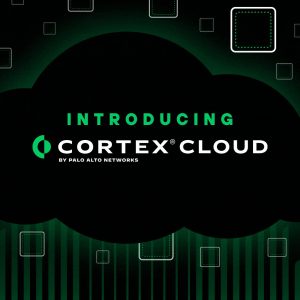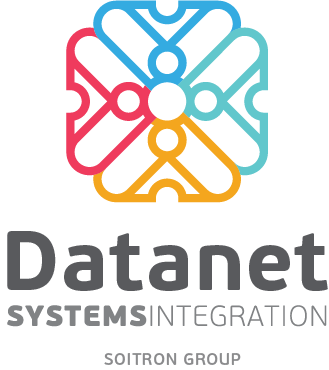Datanet Systems made a strong impression at Cloud Native Days Romania 2025, participating as a Gold Partner with a presence deeply aligned with the industry’s current technological landscape. Held in May at the Radisson Blu Hotel in Bucharest, the event featured an extended Datanet team alongside experts from the broader Soitron Group — including Soitron Slovakia and Sekom Turkey — as well as technology partner Palo Alto Networks. Our jointly hosted booth quickly became a focal point for attendees, offering live expert interactions, hands-on demonstrations, and step-by-step walkthroughs of working scenarios. This practical, solutions-oriented approach resonated with the technical audience, sparking high engagement around current challenges and key considerations in adopting Cloud Native architectures.
Now in its second edition, Cloud Native Days Romania (website event) has become the country’s leading event dedicated to cloud-native technologies. Over two days, professionals from across the region — including open-source, DevOps, and cloud-native specialists — took part in interactive workshops, in-depth technical sessions, and networking opportunities. Formerly known as Kubernetes Community Days Romania, the event serves as a dynamic platform for learning, collaboration, and the exchange of ideas, open to all those eager to explore the future of cloud-native innovation.

Cloud Native: a globally strategic foundation for modern application development
Cloud Native is becoming the global standard for building and managing modern applications. Designed to leverage the full power of cloud platforms, it enables organizations to develop software that is scalable, portable, and resilient—while reducing reliance on legacy infrastructure.
At the architectural level, Cloud Native systems are built as modular microservices that communicate via APIs. These loosely coupled components can be developed, tested, and deployed independently, allowing faster iteration and streamlined operations.
Key principles of the Cloud Native model include:
- Microservices Architecture: Applications are decomposed into independent components—microservices—that communicate via APIs. Each microservice can be developed, tested, deployed, and scaled independently, enabling faster innovation cycles.
- Containerization: Cloud Native applications are typically packaged in containers (e.g., Docker), which offer consistency across environments and simplify the development lifecycle. Containers are lightweight and isolate services for increased reliability and performance.
- Orchestration (via Kubernetes): Orchestration platforms such as Kubernetes are used to automate the management of containerized workloads—handling load balancing, scaling, failover, and seamless rollouts and rollbacks.
- DevOps and CI/CD: The Cloud Native model promotes close collaboration between development and operations teams. Continuous Integration and Continuous Delivery (CI/CD) pipelines streamline code deployment, allowing organizations to release features faster and more reliably.
- Elasticity and Auto-Scaling: Applications automatically scale resources based on demand, ensuring cost efficiency by consuming infrastructure only as needed.
- Resilience and Observability: Cloud Native applications are architected for fault tolerance, with built-in capabilities to isolate and handle failures. Integrated observability tools provide real-time monitoring, logging, and tracing to ensure system health and performance.
- Infrastructure Abstraction: Cloud Native applications are infrastructure-agnostic—they run consistently across public, private, and hybrid environments, eliminating dependence on specific hardware or vendors.

The Business Impact of the Cloud Native Model on IT Operations
As organizations accelerate their digital transformation efforts, the Cloud Native model has emerged as a strategic foundation for modernizing application development, deployment, operations, and security. By leveraging cloud-first principles—modularity, automation, scalability, and resilience—enterprises can unlock greater agility, operational efficiency, and cost optimization:
- Agile Development at Scale – Cloud-native development streamlines the provisioning of environments, enabling teams to build and launch applications faster. The inherent scalability and high availability of cloud platforms ensure consistent performance and uptime—even in the event of component-level failures. By consolidating development, testing, and deployment into a unified environment, organizations reduce time-to-market and simplify release cycles. The adoption of DevOps and CI/CD (Continuous Integration/Continuous Delivery) practices accelerates software delivery while enhancing stability and quality. Additionally, the pay-as-you-go model allows organizations to avoid capital expenditures and pay only for the resources they consume—delivering immediate cost benefits.
- Simplified, Portable Deployment – Cloud-native applications are designed to run seamlessly across multi-cloud and hybrid environments, providing flexibility and reducing the risk of vendor lock-in. This portability enables enterprises to align infrastructure choices with business needs—without being tied to a single provider.Container orchestration platforms like Kubernetes automate the deployment, scaling, and management of microservices, ensuring consistent, secure, and scalable operations across environments.
- Modernized Operations and Built-in Security – With each application component deployed in isolated containers, the attack surface is reduced and fault isolation is improved. Security patches and software updates can be automated through CI/CD pipelines, minimizing manual effort and reducing exposure to vulnerabilities.Cloud-native platforms also enable advanced observability—including real-time monitoring, logging, and tracing. Additionally, security policies can be codified using Infrastructure as Code (IaC), allowing for standardized, repeatable enforcement across environments.
Cloud Native as a Strategic Pillar at Datanet Systems and the Soitron Group
At Cloud Native Days 2025, the Datanet Systems booth served as a key engagement hub for technical professionals, drawing attention through interactive demonstrations, live use cases, and in-depth technical discussions. Together with strategic partner Palo Alto Networks, Soitron Slovakia, and Sekom Turkey, we highlighted how Cloud Native technologies are delivering measurable benefits across infrastructure automation, observability, and platform resilience.
Together with the Soitron Slovakia team, our experts delivered hands-on demonstrations highlighting automation capabilities in cloud-native infrastructures:
- Infrastructure Automation in Kubernetes with Ansible – By integrating Ansible, a declarative, agentless automation tool, with Kubernetes, the team showcased scalable, repeatable automation of both infrastructure and containerized applications.
- Network Configuration Automation – The demo featured automated configuration of networking equipment using Azure DevOps Server, Ansible, the proprietary Soitronaut automation tool, and ETL pipelines—illustrating how automation streamlines network management in complex IT environments.
Additionally, Datanet and Sekom Turkey’s teams highlighted topics such as DevOps, Site Reliability Engineering (SRE), and resilience engineering, with a focus on observability using OpenShift Service Mesh technologies like Istio, Kiali, and Jaeger.
Their demos emphasized the benefits of deploying and managing resilient, observable microservice platforms using OpenShift Container Platform (OCP), reinforced by Chaos Engineering practices that validate system behavior under failure conditions. Key scenarios included:
- Traffic Shifting – Controlled rollout of a new service version using traffic-splitting rules (e.g., routing 10% of live traffic to v2 while 90% remains on v1).
- mTLS Enforcement – Enabling strict mutual TLS authentication between workloads to secure service-to-service communications without code changes.
- Topology Mapping – Real-time visualization of service dependencies, success/failure rates, and latency metrics.
- End-to-End Latency Analysis – Tracking request paths across microservices to identify performance bottlenecks.
- Error Path Tracing – Isolating failed transactions and pinpointing root causes within the service stack.
- Distributed Tracing Management – Deploying Jaeger collectors and defining trace sampling strategies to gain full visibility into transaction flows.
- Latency Injection – Simulating failure scenarios by introducing artificial delays using Istio’s fault injection features to test timeout behavior and resilience.
Throughout the event, the Datanet Systems team provided participants with actionable insights and implementation roadmaps for adopting OpenShift Service Mesh, enhancing observability practices, and integrating chaos testing into CI/CD pipelines. As part of the broader Soitron Group, Datanet continues to align its strategic roadmap around Cloud Native capabilities—empowering organizations to build secure, scalable, and future-ready digital infrastructures.
Cloud Security in real-time Palo Alto Networks Cortex Cloud
 Security was a key theme at the Datanet booth, where Palo Alto Networks alongside Datanet’s Presales specialists introduced Cortex Cloud, Palo Alto Networks latest platform launched in early 2025. Participates were able to see how the solution unifies advanced Cloud Detection and Response (CDR) and Cloud Native Application Protection Platform (CNAPP) capabilities within a single, AI-driven ecosystem. Built natively on the Cortex platform, Cortex Cloud empowers security teams to detect, prevent, and respond to threats in real time through enhanced automation and AI.
Security was a key theme at the Datanet booth, where Palo Alto Networks alongside Datanet’s Presales specialists introduced Cortex Cloud, Palo Alto Networks latest platform launched in early 2025. Participates were able to see how the solution unifies advanced Cloud Detection and Response (CDR) and Cloud Native Application Protection Platform (CNAPP) capabilities within a single, AI-driven ecosystem. Built natively on the Cortex platform, Cortex Cloud empowers security teams to detect, prevent, and respond to threats in real time through enhanced automation and AI.
The solution provides comprehensive coverage across the entire DevSecOps lifecycle, identifying and prioritizing vulnerabilities both in code and at runtime, with contextual visibility that extends to third-party integrations. It also enhances security posture in multi-cloud environments via AI-assisted prioritization and automated remediation. Runtime protection is delivered through the Cortex XDR agent, enriched with cloud-sourced data, while integration with Cortex XSIAM enables a significant reduction in mean time to response (MTTR), supporting scalable and efficient security operations centers (SOC). Highlights showcased at the booth included:
- End-to-end application visibility from code to cloud and SOC, with integration of multiple VCS, CI/CD, IDE, and AppSec tools
- Infrastructure-as-Code (IaC) security for proactive risk mitigation before deployment
- Automated identification of vulnerabilities within open-source packages and their dependency trees
- Secrets detection to prevent sensitive data exposure prior to production
- Unified management of third-party scan results from tools such as SonarQube, Veracode, and Semgrep, ensuring consistent security policies
- Security of software supply chains and CI/CD pipelines
- Compliance management and Software Bill of Materials (SBOM) governance
- Context-aware risk prioritization focusing on critical production workloads
- Accelerated remediation by pinpointing issues within code or pipeline stages
We extend our gratitude to our partners and all attendees who engaged with us at Cloud Native Days Romania 2025. We look forward to continuing these valuable conversations and sharing new innovations at next year’s event.
For further details about the solutions presented, please contact us at sales@datanets.ro.
 Are Your Networks Becoming Too Complex...
Are Your Networks Becoming Too Complex...
